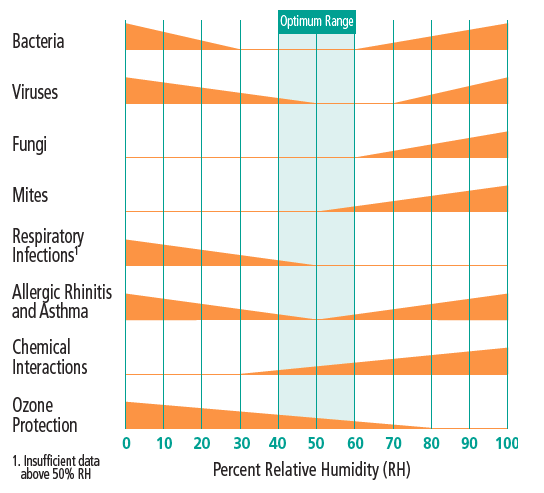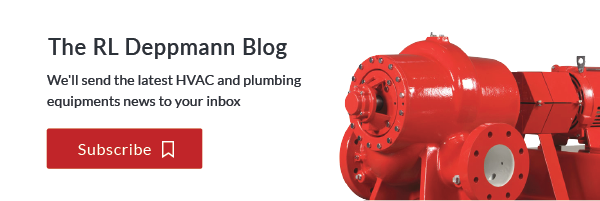Ever hear the phrase, “It’s not the heat, it’s the humidity”? It’s all about humidification in this Monday morning Minute series.
In the commercial HVAC industry, we’d like to reshape that idiom to, “It’s not just the heating and the cooling, but also the amount of moisture in the air that impacts comfort, health, building materials, building content, medical procedures, and production processes and quality.”
But admittedly, that’s a mouthful.
Suffice to say that properly controlled humidification is an essential part of HVAC design, which is why we’re dedicating an entire series to the subject, starting with why we need to humidify spaces in the first place.
Humidification affects People, Process, and Preservation
First, it’s important to understand that when we talk about building or space humidification, we are typically talking about injecting dry steam into the air that is readily absorbed as a gas, not the heavy, moisture-laden steam that fogs up the bathroom mirror after a shower.
We typically humidify the air in our spaces to optimize one or more of the following:
• Human health and comfort
• Manufacturing processes and performance
• Preservation of materials and goods
In most applications, the target range for humidification exists somewhere between 30 to 70%. If you’re assembling semi-conductors, 50%-60% relative humidity (RH) is better because it keeps the static electricity down. If you own a cigar shop, you probably want to keep the humidity between 60 and 70% RH so your merchandise doesn’t dry out.
In the HVAC industry, our humidification efforts are primarily targeted at human health and comfort, which is generally accepted to be within 30% to 60% RH. Per ASHRAE 2016 Handbook Chapter 22, the best condition cited for human occupants is 30% to 60% RH at normal (i.e. 70⁰F) room temperature. This standard is largely based on an extensive study by Dr. Elia Sterling of the University of Vancouver, in 1985.
The study established that both high and low relative humidity had a negative impact on the health and productivity of people in the workplace, schools, and home. High and low humidity has been associated with increases in bacteria, viruses, fungi, dust mites, respiratory infections, allergies, asthma, and ozone.
The following graph from the Sterling report is still frequently referred to today:
As the graph indicates, most applications involving healthy and human comfort are in the range of 40% to 60%.
Specialty Applications
Mechanical humidification is not always about adding just the right amount of moisture to the air for human comfort. Nor does every application aim at Dr. Sterling’s sweet spot of 40% to 60%.
Healthcare facilities often have varying ranges of recommended humidity (and temperature) depending on the use of the given space. For instance, the Centers for Medicare and Medicaid Services (LSC) permits new and existing ventilation systems serving anesthetizing locations to operate within a 20% – 60% RH. At the other end of the healthcare spectrum, a ward for severe burn victims requires up to 95% RH.
Humidification is used in concert halls to help preserve instruments and provide optimum conditions for singers. It’s used in chicken hatcheries to facilitate healthy incubation of eggs. The list of specialty applications goes on and on.
In some areas of the country, humidification is used as a means to an end, that end being comfort cooling. In hot, dry climates such as Phoenix or Las Vegas, equipment like evaporative coolers can be used to cool the air by evaporation of water, a process which uses less energy than standard refrigeration.
So there are many, many reasons why we design mechanical systems to include humidification.
Next up, we’ll cover some essential terminology that will prepare you for some of the more technical blogs to come, including the dreaded psychrometric!


